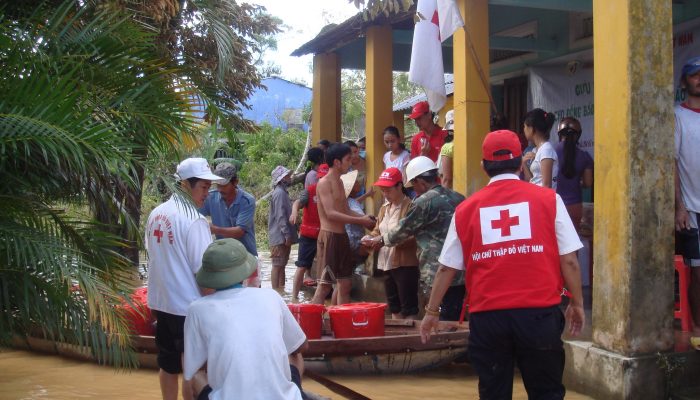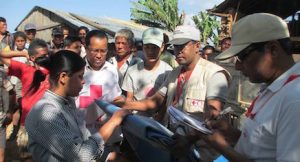Regional Disaster Response Teams (RDRT) are one of the well-established disaster response tools of IFRC that are made up of Red Cross Red Crescent staff or volunteers with cross-sectoral expertise, such as health, logistics, water and sanitation, as well as generalist relief workers who can be deployed at a short notice to respond to a disaster. Most are vastly experienced at providing disaster response within their respective National Societies. The aim of RDRT is to actively promote building of regional capacities of disaster management.
Members of National Red Cross or Red Crescent Societies are trained together as a team to be deployed within a short time to support neighboring National Societies responding to a disaster within a defined geographical region, such as Southeast Asia.
The training curriculum is standardized and designed so that regional teams are both able to support national disaster response teams and work alongside international teams where necessary. The training is organized by the IFRC, which keeps a database of trained members, and alerts and deploys them on request of a National Society. Pre-prepared field equipment, including computers and telecommunications, is kept at the delegations and deployed with the team.
The regional perspective
In the South-East Asia, the first batch of the Regional Disaster Response Team (RDRT) was conducted in Malang, Indonesia, in 2003.
Through the years, the RDRT became bigger and several training sessions were conducted up to 2011 (which is the 12th batch of the RDRT Trainings held in Bandung, Indonesia). The effectiveness and importance of the existence of the RDRT in the Southeast Asia during major disasters that hit the countries within the region either man-made and/or natural disaster events has been well proven. It is also observed that RDRT achieved its primary goal by supporting the disaster-stricken country where the NS required support to manage the disaster.
Updates
The IFRC Regional Community Safety and Resilience Forum meeting 16 – 18 September 2014 held in Bangkok, Thailand, saw the participation of Southeast Asia National Societies namely Philippines, Indonesia, Thailand, Vietnam, Cambodia, Lao, Myanmar, Timor-Leste, Singapore, and Malaysia. Among the discussion is the reactivation of the RDRT in the region to be supported by the IFRC South-East Asia Regional Office.
Among the discussions, the following was agreed among the National Societies of the region:
- RDRT concept be put into the National Societies responsibilities to recruit, train, and deploy;
- Each NS to adopt the National Disaster Response Team (NDRT) as pre-requisite to be recognized as RDRT members;
- Develop RDRT standard operating procedures, terms of reference, and disaster response and contingency plan for the region;
- Develop a standard curriculum for NDRT, to be adopted by all National Societies of Southeast Asia region;
- Each National Society will appoint an RDRT focal person (to be led by the Disaster Management and to have alternate lead from Health and OD/other department as may be assigned by each National Society Management);
- IFRC in Southeast Asia region will assign focal person to support the National Societies;
- Develop a standard agreement for all South-East Asia NS to ensure that support to NDRT and RDRT is within each National Societies’ priorities;
- Conduct of inventory of all NS Disaster Response assets, equipment, and manpower for RDRT; and
- Conduct of RDRT Master Training.
e-mail: Mr. Hung Ha Nguyen, at hungha.nguyen@ifrc.org
Deployment history of RDRT Southeast Asia
2016
Floods in Lao PDR
2015
Nepal earthquake
2013
November, the “Super Typhoon Haiyan” that struck the Philippines.
2010
Flood in Pakistan
2008
Typhoon Nargis in Myanmar
2007 – 2010
Various typhoon disasters in the Philippines (including Typhoon Fengshen, Ketsana and Megi in the Philippines)
2006
- May, East Timor Typhoon and Flooding (embedded delegate to IFRC)
- June, Saint Bernard Landslide, Southern Leyte, Philippines
- December, Tsunami in Banda Aceh, Indonesia
2005
First RDRT South-East Asia deployment in Pakistan Earthquake
![]()



